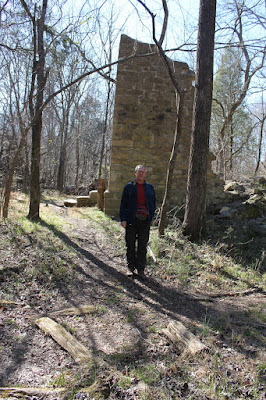And despite the size of the trailer, it has everything we need to remain comfortable. When we have electric hookup capability, it has a powerful air conditioner. When we don't have electric hookups, we can exist for several days on battery power, but we also have a Honda 2000-watt generator that we use from time to time. The generator will even run the air conditioner, but we don't use it for that.
Another thing that always surprises people who go inside our little trailer is that it has a full bathroom. It has what would be called a "marine head". In the bathroom there is a toilet, a sink, and a shower.
There's also a two-burner gas stove in the trailer, a sink, and a two-person dinette. We leave our bed permanently as a bed, but it can also be made up to serve as a four-person dining table with benches. In brief, the trailer is perfect for our jaunts to isolated campgrounds around the country.
Vacation season is coming up for us, so we're looking around and planning our warm-weather itinerary.
 I like this photo because it shows the small size of our little trailer. This was taken at the Salt Springs Recreation Area in the Ocala National Forest in Florida. This campground was originally a private concern, but the National Forest Service bought it and now it's a public campground. We stayed there while exploring the first-magnitude springs of the Ocala. We enjoyed this campground because it had complete hookups, which we almost never encounter in our National Forest journeys. It had electric, water, and sewer hookups. We're thinking of heading there again for another stay.
I like this photo because it shows the small size of our little trailer. This was taken at the Salt Springs Recreation Area in the Ocala National Forest in Florida. This campground was originally a private concern, but the National Forest Service bought it and now it's a public campground. We stayed there while exploring the first-magnitude springs of the Ocala. We enjoyed this campground because it had complete hookups, which we almost never encounter in our National Forest journeys. It had electric, water, and sewer hookups. We're thinking of heading there again for another stay.

















































